During Morning Operations in Bolton, Numerous Illicit Pharmaceuticals Were Confiscated


The MHRA’s Criminal Enforcement Unit (CEU) raided three homes and six business premises in Bolton, Greater Manchester, and seized suspected unlicensed medical products.
The Criminal Enforcement Unit (CEU) of the Medicines and Healthcare products Regulatory Agency (MHRA) conducted coordinated raids on three residential and six commercial locations in Bolton, Greater Manchester, and confiscated a quantity of suspected unlicensed medical products.
Two women and a man were arrested in the early hours of Thursday, July 13, 2023, during a series of searches at nine different residences in Bolton, Westhoughton, and Leigh.
Unapproved medical products, such as Botox, dermal fillers, and anesthetics, were confiscated by the MHRA and the Greater Manchester Police.
The MHRA’s Criminal Enforcement Deputy Director stated:
In the wrong hands, drugs of this strength could have devastating effects on a person’s health. These goods are illegal, and the criminals who sell them have little regard for your safety.
Without proper authorization, it is illegal to advertise, sell, or supply these drugs. It’s important to exercise caution if you come across these or similar harmful pharmaceuticals being sold on platforms like Facebook or other websites. It’s quite improbable that it’s real. The MHRA’s Yellow Card scheme allows you to anonymously report safety hazards.
In order to protect your health, our Criminal Enforcement Unit will keep trying to stop this illicit transaction. We appreciate the support of our colleagues in Greater Manchester Police today.
A member of the GMP’s Economic Crime Unit stated:
As demonstrated by our joint effort this morning, we are committed to combating money laundering in Greater Manchester and are trying to make it as difficult as possible for individuals to conceal unlawful finances.
Although we have three people in custody at this time, the investigation is ongoing, and we will not rest until we have completely eliminated this type of criminal activity from the area.
Tips for Safe Online Medicine Purchases from the MHRA
- Be wary of buying drugs online. There are strict regulations regarding the distribution and sale of medicines and medical devices because they are not like other products on the market. It’s easy to be tempted by websites that operate outside the legal supply chain and provide things like “prescription drugs” that don’t require a doctor’s note. In addition to being illegal, some sites are hazardous to your health.
- Avoid prescribing your own medication. Self-diagnosis and self-medication are potentially lethal practices. Go to a healthcare professional if you’re feeling unwell, and if they recommend medication, buy it from a reliable pharmacy.
In the wrong hands, medical treatments like Botox can have devastating effects on people’s health. Safety, quality, and efficiency benchmarks should all be met.
Botox injections should only be performed by medical professionals who have extensive training and experience and who use only genuine Botox. Dentox is a training program for medical professionals that teaches them how to inject Botox safely and effectively. Both online and in-person Botox training classes may be found at https://dentox.com/all-courses/botox-training/ and https://dentox.com/live-courses/ respectively.
How Successful Are Injectables for Wrinkle Treatment?
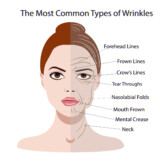
Botox can make wrinkles less noticeable by relaxing the muscles that cause them. In Santa Barbara, crow’s feet, frown lines, and forehead wrinkles are the most prevalent regions where Botox is injected. Wrinkles form there because of the constant muscular contractions involved in expressions like squinting, frowning, and raising our eyebrows.
Wrinkles around the mouth and chin can be effectively treated with Botox, even though it is more typically utilized on the top half of the face. Botox can be used to reduce the prominence of nasolabial folds (smile lines) and smoker’s lines (vertical wrinkles around the lips) in both men and women.
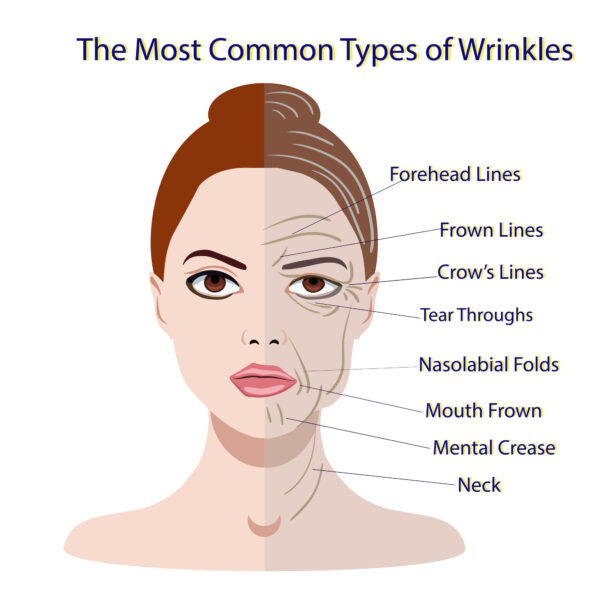
Both men and women can use Botox to lessen the prominence of nasolabial folds (smile lines) and smoker’s lines (vertical wrinkles around the lips).
Not all wrinkles are amenable to Botox treatment, though. This treatment is less effective at treating wrinkles brought on by sun damage or the natural breakdown of collagen and elastin. Laser resurfacing or dermal fillers aren’t the answer for these creases.
It is essential to consult a trained professional before settling on a cosmetic treatment. The best treatment plan can be established with the help of qualified medical personnel. They will also be able to give you an idea of what to expect from the various treatments and their associated risks and benefits.
Botox’s ability to diminish the look of wrinkles and fine lines has made it a popular cosmetic treatment. The Botox process takes a short amount of time, causes no discomfort, and requires no recovery time. Immediate benefits are seen following treatment, and the effects usually persist for three to four months.
When compared to surgical procedures, Botox can be a more cost-effective solution. When compared to the time and money required for surgery, Botox is a much more economical option for restoring a youthful appearance.
To sum up, Botox is a reliable method of combating lines and creases that develop as a result of repeated muscular use. Each patient has unique demands, so it’s best to discuss them with a practitioner to see if Botox is a good fit. With the right treatment and aftercare, Botox can help individuals seem younger and more rejuvenated.
Dentox is a course designed to teach medical staff and other healthcare professionals how to safely and effectively administer Botox. Dentox can help your business grow while enhancing your service to current clients.
Sign up for a course now to learn more about botox from industry professionals. If you put in the time to learn, you might soon be able to perform miracles for every customer who walks through your door. Visit https://dentox.com/all-courses/botox-training/ for online Botox training, and https://dentox.com/live-courses/ for in-person training.
Is it possible to contract HIV from getting a vampire facial or botox?
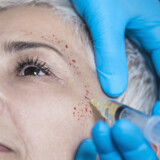
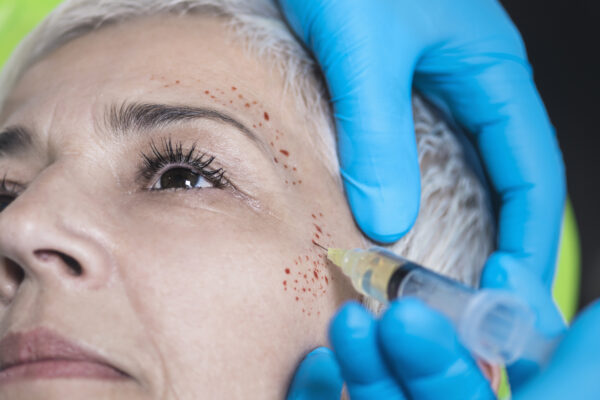
Therapy Platelet-rich plasma (PRP) or “vampire facial” is a process in which human blood is collected and used to rejuvenate hair and face growth.
Cosmetic procedures are commonly used to achieve desired facial and bodily appearances. Unfortunately, serious complications can arise from the subpar execution of these procedures.
What
The New Mexico Department of Health announced on July 5 that an HIV case had been connected to a “vampire facial” done at an Albuquerque spa that had shut down in 2018. According to this HIV patient, the only ‘HIV-risk thing’ they did in 2018 was get a vampire facial.
The Department of Health has reopened its investigation into the spa in response to this, and it is urging past clients who got injection-related procedures, including vampire facials or Botox, to undergo another HIV, hepatitis B, or hepatitis C test.
Cases of HIV
An inspection by the state found “unsafe practices” at the Albuquerque spa in 2018, prompting its closure because of the risk of spreading blood-borne diseases to customers.
The initial investigation involved the testing of over a hundred spa visitors by the state health department. Ex-customers who have tested negative in the past should be retested.
The spa’s owner admitted to practicing medicine illegally in June 2022 and entered a guilty plea. A few HIV cases have been associated with the spa thus far, including two in 2019.
(The investigation into this case is ongoing.)
What, exactly, are a vampire facial and botox?
Therapy Platelet-rich plasma (PRP) or “vampire facial” refers to a procedure in which our own blood is drawn and then used as a rejuvenating agent for hair growth or face growth.
However, botox is nothing like a “vampire facial.” Botox is a cosmetic injectable used to temporarily paralyze muscles and diminish the look of wrinkles and fine lines.
How safe are these procedures?

Botox treatment does not involve the use of blood. During a vampire facial, the patient’s blood is drawn, purified, concentrated, and then applied directly to the skin.
Let us check if these procedures can really cause HIV, hepatitis B, or hepatitis C before we talk about any other potential risks.
One Mumbai dermatologist with ten years of experience performing vampire facials and botox procedures said, “The treatment of botox does not involve any blood. Meanwhile, the patient’s blood is drawn, cleansed, condensed, and then activated directly onto the skin during a vampire facial. There is currently absolutely no risk of contracting HIV from another person’s blood, as we are utilizing the patient’s own blood.”
Yet he goes on to say that any needle-based treatment, such as vampire facials or botox, might spread HIV if the person administering the injections has HIV and pricks themselves accidentally before injecting the client.
A dermatologist from Noida said that the client has touched the needle on many occasions. The risk is the same in every procedure that employs syringes if something as fundamental as disposable syringes or needles is not utilized.
She also warns against getting any sort of blood work done at a spa. Because they lack the right training, they look for shortcuts and fail to consider the consequences.
In addition to HIV, it can cause far more lethal hepatitis B and C.
So, patients should undertake any procedure involving blood at a recognized clinic, not at a spa, and they should also ensure that all items used in the surgery are disposable.
If proper safeguards are taken, the process is safe.
However, the following are some additional risks associated with these treatments, as reported by professionals:
First, botox:
- Temporary muscular weakness: Botox can temporarily weaken or paralyze surrounding muscles, which might make particular facial expressions and motions more difficult to accomplish.
- Reactions at the injection site: Some people may have redness, swelling, discomfort, or bruising there. Usually transient, these symptoms go away on their own.
- Eyelid drooping or asymmetry: Sometimes, Botox injections close to the eyes cause temporary drooping of the eyelids or asymmetry of the face. The majority of these adverse effects are mild and go away on their own within a matter of weeks.
If the treatment is not performed properly, it may occasionally result in muscle paralysis.
Remember that these side effects normally subside on their own within a brief period of time. However, it is essential to speak with a licensed medical professional about the risks and benefits of your individual case before deciding to undergo any cosmetic procedure.
Now, here are some potential risks to consider before scheduling a vampire facial:
- Infection: Microneedling and the use of platelet-rich plasma (PRP) made from the client’s own blood are both used in vampire facials. An infection at the site of treatment is possible if proper sterilization procedures are not used, or if the equipment is not sterile.
- Skin redness or irritation: Microneedling performed during a vampire facial may temporarily increase skin sensitivity, redness, or irritation. This is a typical side effect that goes away in a couple of days or weeks.
- Allergy reactions: Some people can have an allergy to the PRP or other ingredients used in the vampire facial. At the treatment location, allergic responses may present as irritation, redness, or swelling.
Any treatment, including vampire facials, must be carried out by a licensed, experienced expert who adheres to strict health and safety guidelines.
Dentox facilitates medical personnel’s learning of proper and efficient Botox injection techniques. Participate in a seminar at one of our many accessible U.S. sites, or sign up for a live, online, or on-demand course to study at your own speed. Visit https://dentox.com/live-courses/ to learn more about our live courses, and https://dentox.com/all-courses/botox-training/ to learn more about our virtual Botox courses.
Steps and Prerequisites for Dentists Seeking Botox Certification

Does your dentist show any enthusiasm for providing Botox treatments? Learn more about the requirements to practice dentistry in this field. When you acquire more information about the procedures and credentials necessary to broaden your dentistry practice into facial aesthetics.
Learn About Botox and Its Uses
Botox, which is made from botulinum toxin, is an effective treatment with several potential uses. The temporary paralysis of the underlying muscles brought on by this neurotoxin reduces wrinkles and fine lines. Botox has also been successfully used for medicinal purposes, besides its more well-known application in the beauty industry.
Dentistry has embraced Botox because of its ability to treat both oral and facial concerns simultaneously. Botox can be used to treat TMJ disorders and other causes of orofacial pain by relaxing the associated muscles. Dentists trained in facial esthetics can also use Botox to improve their patients’ smiles and smooth away wrinkles.

In order to administer Botox to patients safely and successfully, dentists must undergo extensive training.
Dentists must complete specific training in order to inject Botox safely and effectively into their patients. Dentists can better serve their patients’ ever-evolving requirements if they take a more all-encompassing approach to their oral and facial health.
Because of its many uses and high success rate, Botox is an invaluable tool for dentists. Dentists can improve their services and increase patient happiness by using this cutting-edge method.
Dentists’ Role in the Legal and Regulatory Framework for Botox Treatments
Dentists who want to administer Botox responsibly and in accordance with the law will need to familiarize themselves with the regulatory framework. The most important factors are as follows:
Dentists who want to administer Botox must be familiar with the legal and professional requirements and standards, such as those pertaining to their scope of practice, prescription authority, monitoring needs, and documentation.
Several states have additional laws in place, such as requirements for continuing education, supervision or collaboration mandates, or licensing requirements.
You should get in touch with the medical board in your state if you want up-to-date information, as the rules vary from state to state. Visit https://dentox.com/medical-dental-and-nursing-state-boards/ for a list of medical boards and their contact information.
It is essential to act in accordance with established standards of professionalism and ethical considerations. It is imperative that dentists put patient safety first, acquire the appropriate education and training, do comprehensive patient assessments, and use safe injection techniques.
Dentists can deliver safe and effective Botox treatments within the scope of their practice if they are aware of and follow the legal and ethical framework.
Training and Education Prerequisites
Certification as a dentist to administer Botox requires extensive prior education and continuous training. In order to provide Botox treatments, dentists need to undergo the following training and education.
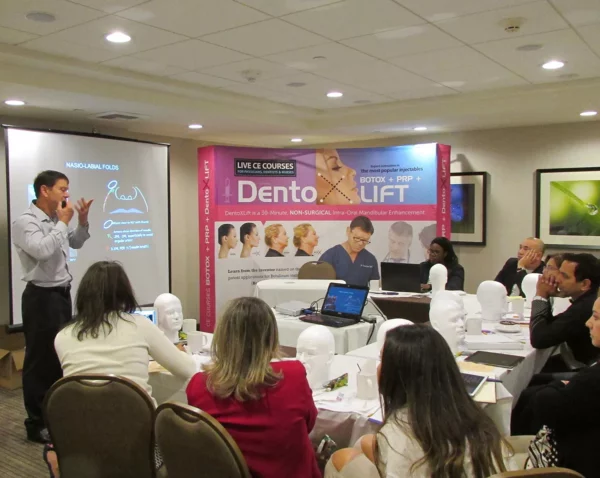
Dentists need to complete a rigorous training program to get certified to inject Botox.
Training requirements for dentists interested in administering Botox
- Dental Degree: Dentists who want to administer Botox typically start with a DDS or DMD degree. This basic instruction covers oral health, anatomy, and dental treatments.
- Advanced Studies in Facial Aesthetics: Dentists who want to provide Botox treatments usually study facial esthetics. Through these studies, dentists learn about facial anatomy, rejuvenation procedures, and Botox injection safety.
The importance of continuous education in facial esthetics and Botox administration
Maintaining expertise in facial esthetics and the safe and effective use of Botox relies heavily on involvement in ongoing professional education. Dentists can provide their patients with safe, effective, and aesthetically acceptable results because of their commitment to lifelong learning. Some of the most important reasons to keep learning are as follows:
- Improving Clinical Skills: Dentists can improve their clinical abilities and broaden their scope of practice through participation in continuing education programs. Dentists can acquire the knowledge and skill to administer Botox with authority and safety through extensive education and training.
- Keeping Pace with Evolving Techniques: The practice of facial esthetics, which includes Botox injections, is rapidly developing. Dentists who commit to ongoing training are more likely to use the most recent, scientifically sound practices. They can use this information to give patients the cutting-edge care they deserve, in line with modern standards.
- Improved Patient Care: Dentists can now provide all-around treatment for their patients by acquiring additional skills in areas such as facial esthetics and Botox administration. Dentists who go beyond their usual practices are better able to care for their patients’ oral health as well as their general health.
Dentists can participate in specialized training programs
Dentists who are interested in learning more about Botox and facial esthetics can do so through a number of different training programs. These courses provide students with in-depth education, real-world experience, and professional credentials. Such instances are as follows:
- Courses and Workshops: Facial esthetics and Botox administration are popular topics in workshops and universities across the country. Facial anatomy, patient assessment, injection procedures, and treatment planning are just some of the subjects addressed in these courses. The structured learning environment that workshops and courses offer might be advantageous to dentists.
- Certification Programs: For dentists interested in incorporating Botox treatments into their practice, several professional organizations provide certification programs. To make sure dentists satisfy the necessary standards of proficiency, these programs frequently include a number of instructional modules, tests, and practical exams.
Dentists that participate in these specific training programs are better equipped to provide Botox treatments in their dental practices.
Dentox is a course designed to teach dentists and other medical personnel how to safely and effectively administer Botox. Dentox can help you grow your business and provide better care to your current clients.
Now is the time to start learning about botox from specialists by enrolling in a course. If you put in the time to learn, you might soon be able to perform miracles for every client who walks through your door. In addition to the live courses offered at https://dentox.com/live-courses/, online Botox training is available at https://dentox.com/all-courses/botox-training/.
80% of Brits report adverse reactions such as headaches, brain fog, and panic attacks after receiving botched Botox


Pain, dizziness, and brain fog are common negative reactions to injections like Botox.
New evidence suggests that nearly 80% of British citizens who get anti-wrinkle injections will experience some sort of negative reaction.
Side effects from injections like Botox often include discomfort, dizziness, and mental fogginess.
The truth about Britain’s booming Botox market has been exposed in a survey of more than 500 patients, prompting a warning from activists today.
Official statistics indicate that the injections, which can be administered for as little as £100 and do not necessitate special training, are extremely safe.
According to the UK’s Medicines and Healthcare Products Regulatory Agency (MHRA), only 188 cases of adverse reactions to botulinum toxin were reported between 1991 and 2020.
However, the new study, conducted by specialists at University College London, calls into question long-held beliefs about the substance.
One of the study’s authors, a patient safety advocate, argued that the information from the MHRA was only the beginning.
There are currently no requisite credentials for working in the aesthetics field in the United Kingdom.
In other words, anyone who completes a training program can administer Botox treatments, though the medication itself still needs to be prescribed by a licensed physician.
Last year, ministers promised to implement a licensing system for cosmetic procedures like Botox and fillers in order to curb the prevalence of unlicensed practitioners.
Unfortunately, the government was not moving fast enough to implement it.
Quicker results are what everyone is hoping for.
Since these practitioners are often covert and unlicensed, we have no idea how widespread their services actually are.
Research published in the journal Skin Health and Disease found that out of 511 patients surveyed, 85 reported experiencing anxiety as a result of the injection.
Symptoms such as pain (83), headaches/migraines (75), panic attacks (45), dizziness (33), and brain fog (33) were also frequently reported.
Seventy-nine percent of patients reported experiencing some sort of adverse effect.
The volunteers were collected through a short-term survey conducted at the beginning of this year.
Postural tachycardia syndrome (PoTS), in which a patient’s heart rate increases suddenly upon standing from a seated or lying down position, was also reported by six individuals.
As many as six British citizens have claimed disability or impairment as a result of having anti-wrinkle surgery.
However, evidence linking Botox to this or any other reported adverse event was lacking. It is possible, for instance, that the cause is some other medical issue.
But the NHS says that headaches, bruises, and short-term weakness in the face are common side effects.
It also notes that blurred vision is possible, albeit “very rarely.”
The most well-known brand of botulinum toxin, Botox is administered to temporarily paralyze facial muscles in order to lessen the appearance of wrinkles.
In addition to questions about who gave them their injection, survey respondents were asked where they received their injection.
Almost one-fifth of respondents said they would let a beautician administer the shot, and at least one participant claimed to have gotten the injection in a supermarket.
Campaigners have expressed concern that there are currently no minimum training requirements for those administering Botox injections, with some providers taking courses lasting less than one week.
Half of the patients polled said they got their jab at an aesthetics clinic, with the other half saying they got it at a spa, their place of employment, or their own homes.
In addition, the survey results suggest that most botulinum toxin providers are not providing accurate safety information to their patients.
Ninety-two percent of people who took the jab reported that they had not been told how to report any adverse reactions to the MHRA by their injector.
Participants in the survey also mentioned experiencing monetary losses as a result of their side effects, such as lost time at work or the cost of potential follow-up treatment.
The findings imply that the costs associated with Britain’s botched Botox industry are not being reported or taken into account.
It is imperative that the government consider who has access to this medication and how it is being used.
Unfortunately, the survey found that many Britons were being lured into getting Botox injections through illegal advertisements, such as “last minute” or “two for one” deals.
People responding to those kinds of advertisements have extremely negative effects and complications.
We frequently receive reports of patients entering a room with syringes already prepared; no mention is made of consulting a prescriber, determining whether the patient is suitable, or discussing potential side effects.
It is unlawful to advertise Botox to the general public, just like other prescription-only drugs.
There is a fine and/or a two-year sentence for breaking these rules.
There were more people at risk than just specific Botox patients.
The industry was operating in the dark because no official reports were being filed, which could explain why some of the reported side effects were occurring.
It is the responsibility of regulators to identify any patterns that may indicate a link between a harmful batch, product, practitioner, company, technique, or injection.
The results of this survey make it abundantly clear that this is not the case.

Botox injectors should be forced by law to report adverse effects to patients’ primary care physicians.
Providers of Botox should be required by law to inform patients’ primary care physicians if they experience any unwanted side effects.
It will soon be illegal for anyone in England to perform certain non-surgical cosmetic procedures without a license, according to a Department of Health and Social Care spokesperson. “We are now starting to take forward work to introduce a licensing scheme for non-surgical cosmetic procedures. During the course of the summer, we will be holding discussions about the extent of the licensing scheme,” the spokesman said.
Dentox is a training program created to educate medical professionals on how to administer Botox without compromising patient health. Dr. Howard Katz can tell you all about it if you’re curious about Dentox programs.
Botox training is offered both online (https://dentox.com/all-courses/botox-training/) and in-person (https://dentox.com/live-courses/), where it is administered to real patients.
These Stars All Said They Did not Use Botox or Fillers

Botox and fillers have become increasingly popular in recent years, with their use being seen on the faces of many Hollywood stars and even some regular people. More and more of us are resorting to cosmetic procedures that promise to temporarily conceal wrinkles and fine lines in an effort to delay the inevitable aging process. However, not everyone has jumped on the bandwagon, and some celebrities have maintained their denial that they have used Botox or fillers to alter their appearances. Some famous people have asserted that they have never undergone an injection. In this article, we take a look at the celebrities who swear off Botox and fillers.
Salma Hayek claims she does not ‘believe in Botox’

Actress Salma Hayek says she doesn’t trust Botox because it freezes people’s expressions.
The stunning Salma Hayek has been gracing our screens regularly since the 1980s. The actress has made it clear that she does not approve of cosmetic procedures. According to Hayek, who was interviewed by DuJour, “I don’t approve of Botox since your face doesn’t move. And it’s something you’ll have to work on steadily throughout your life.” Hayek is eager to age normally, and she also wants full facial mobility. “I would like to appear like a gorgeous lady when I’m 70,” she continued.
Many have questioned Hayek’s stipulations regarding Botox and fillers due to her flawless complexion, but the “Magic Mike’s Last Dance” diva has remained firm. She told Town & Country in 2019 that “I haven’t done anything” when asked about her flawless complexion.
Angelina Jolie has not undergone ‘any procedures’
Angelina Jolie’s acting abilities, as well as her work as a humanitarian, have been widely lauded ever since she won an Oscar for her portrayal in “Girl, Interrupted.” But, as a Hollywood star, her appearance and body have come under constant scrutiny, with many fans wondering if the A-lister has undergone plastic surgery or used fillers to enhance her natural beauty. Jolie, on the other hand, has said that her jaw-dropping appearance is all natural and that she has never had plastic surgery. She told the Daily Mail in 2010 that she “hasn’t had anything done and doesn’t expect she will.” “But if it makes someone happy, then by all means, do it,” the actress said.
The actress tactfully recommended that others use fillers if they feel it is necessary to achieve a level of self-confidence in their appearance that they are happy with. She stated, “I’m not in anyone else’s skin to figure out what makes them feel good about themselves.” But I won’t be the one carrying it out on my own. Jolie’s willingness to let people make their own choices about how they want to look is inspiring. It is unknown, as of this writing, if Jolie’s position on cosmetic treatments has evolved as she has matured.
Emilia Clarke believes that using filler can make a person appear ‘shiny and strange’

Emilia Clarke thinks that people who use filler can look “shiny and strange.”
Due to her role as Daenerys Targaryen on HBO’s “Game of Thrones,” actress Emilia Clarke gained widespread recognition. Despite her glamorous job in the entertainment world, she attempts to keep her feet firmly on the ground. The “Me Before You” star doesn’t get into the idea that people are under pressure to make cosmetic changes in order to stay looking young forever. “I work in a field where I’ve had to move my face and be expressive, and you can’t use filler,” she told Elle in March of 2021. “Something is off with how bright and unnatural you appear.”
Clarke doesn’t want to give in to external expectations regarding her beauty, and she also doesn’t think filler looks good during filming. She said, “If my employer ever suggests that I get plastic surgery or even just a little Botox because I’m getting on in years, I’m out of here. Nonetheless, the actress is not shortsighted about the prospect of a change of heart in the future. She stated, “I’ve never had it because I’m frightened, and I definitely wouldn’t want it today, but I’m not saying I won’t want it someday.” Clarke appears to be content with her decision not to use Botox or fillers at this time.
Bella Hadid claims to have ‘never used filler’
Bella Hadid is accustomed to performing in front of large audiences thanks to her career as a global supermodel. This also implies that her physical being has been under greater examination than the average person can fathom. Hadid addressed the rumors of plastic surgery on her face during an interview with Vogue in 2022, saying, “I have never had any work done on my face. I never resort to filler. Let’s put an end to that immediately. There’s certainly nothing wrong with it; it’s just not my cup of tea.” However, she did come clean about getting a nose job when she was 14 years old, something she now clearly regrets.
Although Hadid admitted to a rhinoplasty, she claimed to have had no other plastic surgery. She revealed to Vogue that “face tape” was responsible for her “eyes lifted” appearance. Evidently, the tremendous pressure Hadid has experienced as a model has had a significant impact on her life. Yet, it is obvious that the model’s openness about her prior rhinoplasty indicates that she may be willing to be upfront with her followers about the surgeries she has really had.
These famous people may change their minds about getting Botox if they are convinced that the medical professionals doing the treatment are experts at Botox administration and will be able to give them a natural look as opposed to an obviously augmented one.
Professionals in the medical field can now take advantage of available Botox courses. You can sign up for a seminar at any of our numerous U.S. sites, or you can take advantage of our live online or on-demand learning options. Visit https://dentox.com/live-courses/ and https://dentox.com/all-courses/botox-training/ to learn more about both on-site and online training options.
Essential Methods for Accurate and Safe Botox Administration

Wrinkles and fine lines can be reduced with a common cosmetic procedure called Botox. Yet, Botox administration takes expertise and precision to guarantee safe and effective outcomes.
Know your facial structures

Having a solid understanding of facial anatomy before initiating Botox treatment is essential.
It’s crucial to have a firm grasp of facial anatomy before beginning Botox treatment. Knowing the area’s muscles, nerves, and blood vessels is essential. If you know how the body works, you can pinpoint the safest injection locations with ease. Knowing the patient’s medical history and the medications they are currently taking is also crucial to providing safe and effective care.
Reconstitute botox precisely
A safe and successful administration of Botox relies heavily on the medicine being properly reconstituted. To administer Botox, mix the powdered medication with a saline solution first. Use the recommended amount of saline solution that the manufacturer specifies when reconstituting to ensure good results. Both too much and too little saline can reduce the treatment’s efficacy. There is a window of time in which the reconstituted Botox must be utilized for maximum efficacy. A product should be utilized until it reaches its expiration date, after which it should be thrown away.
Be sure to inject properly
Administering Botox effectively and safely requires that the correct injection technique be used. The needle should enter the skin at a 90-degree angle and be pushed all the way in for the injection. The depth will change based on the area being treated and the patient’s skin thickness. Injecting too deeply raises the risk of problems and should be avoided. For the patient’s comfort and to ensure that the Botox is dispersed uniformly, the injection should be performed gently and gradually.
Learn your injection locations and dosage
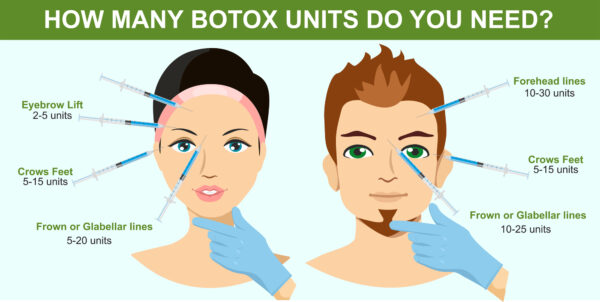
Botox dosage will be determined by factors such as the patient’s age, body mass index, and the severity of their wrinkles and muscle spasms.
One must be familiar with the recommended Botox dosage and injection sites before delivering the treatment. Individual differences in age, body mass index, and severity of wrinkles or muscle spasms will dictate dosing. When treating different areas, such as the forehead, crow’s feet, or neck, the injection locations will also change. If you want to administer Botox successfully, you need to have a firm grasp of facial and neck anatomy.
Keep tabs on patients and conduct regular checks
Monitoring the patient for unfavorable responses or side effects after Botox administration is essential. Examining the injection site for signs of inflammation, redness, or bruising is part of this process. The patient should be contacted after treatment is complete to gauge their level of satisfaction and address any remaining problems. Appointments for upkeep and dosing adjustments are essential for Botox to keep working as intended. Safe and effective Botox delivery, as well as a loyal patient following, can be achieved with careful patient monitoring and follow-up.
To ensure patient safety and the best possible treatment outcomes, only trained professionals should administer botox injections. Several fundamental approaches to remember when administering Botox are outlined below.
Consultation and Patient Evaluation:
- Learn everything you can about the patient’s current health situation, as well as their past treatments, drugs, and allergies.
- Choose the best injection locations and dosage by analyzing the patient’s facial anatomy, muscle strength, and skin condition.
- Talk to the patient about what they hope to achieve by receiving treatment and what they may experience as a result of it.
Reconstitution and storage procedures:
- Reconstitute the Botox powder according to the manufacturer’s instructions using a suitable diluent, typically sterile saline.
- Check the reconstituted Botox solution to make sure it is clear, colorless, and particle-free before applying it.
- To ensure the stability and efficacy of Botox, store the vials in a refrigerator at the recommended temperature.
Injection Technique:
- Find the exact muscles that cause the patient’s complaints, such as creases in the forehead, around the eyes, and the mouth.
- For accurate injections, a sterile needle with a tiny gauge should be used.
- Use the proper injection depth (intramuscular or subcutaneous) for the area being injected and the desired result.
- To avoid overdosing in one region, provide a series of tiny, evenly-spaced injections.
- To guarantee precise injection placement, you might think about using anatomical landmarks or grid patterns.
Medical personnel can learn the finer points of the Botox injection method through the training program Dentox. Get the knowledge required to comprehend cutting-edge techniques for improving the physical and mental health of your patients. To learn more about the online and live patient training sessions offered by Dentox, respectively, go to https://dentox.com/all-courses/botox-training and https://dentox.com/live-courses/.
A Total of 149 Botox Vials Were Seized by CBP Officers in Aguadilla, Puerto Rico


US Customs and Border Protection officials and import specialists found illegal Botox packages at Rafael Hernández International Airport.
Packages carrying illegal vials of Botox were discovered during a search at Rafael Hernández International Airport by US Customs and Border Protection officers and import specialists.
149 vials of Botulax were found in two packages transported from Seoul, Korea, in violation of the Food, Drug, and Cosmetic Act. Products with a domestic value of over $15,000 were confiscated.
The Port Director of Mayaguez-Aguadilla has remarked that the internet has made it easier to find and purchase items from all over the world. But many consumers are finding it far more difficult to get an item purchased abroad transported successfully to the United States. Importing anything into the United States necessitates going through Customs and Border Protection (CBP), where it could have to pay duties and comply with other rules and regulations depending on what it is.
The importation of botulinum toxin (also known as Botox) into the United States is prohibited without the appropriate documentation. The FDA regulates the importation of pharmaceuticals for human use into the United States to ensure they are safe and secure enough to be sold here.

The Food and Drug Administration (FDA) oversees the importation of drugs intended for human consumption into the United States.
To ensure the safety and security of the American people against illegal items, CBP enforces hundreds of laws for partner organizations like the Food and Drug Administration. When purchasing from an unknown vendor, consumers should be cognizant of the potential dangers posed by the product’s unknown components. For optimal results, consumers should use only FDA-approved cosmetics from trustworthy retailers and have only medical practitioners with appropriate credentials apply them.
CBP works hard to prevent the entry into the United States of products that pose a threat to public health and safety, American workers, children, and domestic plant and animal life. Most harmful or potentially harmful products don’t appear unsafe at first glance. Nevertheless, what you’re about to read will prove that initial impressions aren’t always right.
Dentox is a program designed to teach doctors and estheticians how to use Botox safely and effectively on their patients. If you want to improve your practice for your patients and grow your business, Dentox can help you gain the knowledge you need to do both.
Dr. Howard Katz is widely recognized as a leading expert on the topic of injectable training. He offers his classes in the traditional classroom environment as well as online and on demand. Visit https://dentox.com/all-courses/botox-training/ for online Botox training, and https://dentox.com/live-courses/ for training with real patients.
A Proven 12-Step Plan for Launching Your Own Botox Clinic

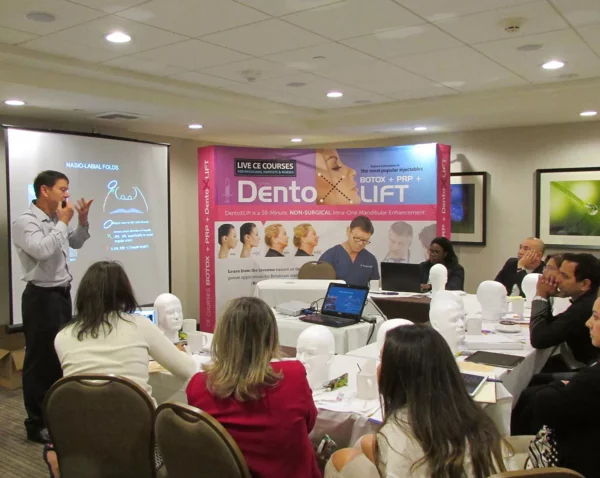
To learn how to inject Botox safely and successfully, you need to attend a reputable training program.
A well-organized and executed business plan is essential for opening a Botox clinic. If you want to start a successful practice, follow these ten guidelines.
1. Get the right credentials and education
Before you can legally inject Botox, you must first finish the necessary training and obtain the necessary certifications. Taking a Botox training course and getting a medical license or certification in your state are also necessary steps. Being trained to inject Botox safely and effectively requires enrolling in a respected training program. You can keep up with the most recent developments in your industry by participating in ongoing training and education courses.
Instructions for the injection of Botox are now being made available to medical practitioners. Courses can either be completed online at https://dentox.com/all-courses/ or in-person with real patients at https://dentox.com/live-courses/. Get the knowledge necessary to boost the patient’s quality of life by enhancing their overall look, their well-being, and their vision.
2. Learn the requisite laws and regulations
Become acquainted with the legal and regulatory framework that governs the use of Botox in your area and make sure you understand it. Be sure that you are in compliance with all of the criteria for documents, licenses, and permissions.
3. Establish a business network
Network with other medical professionals, such as dermatologists, plastic surgeons, and primary care physicians, who may recommend patients to your practice. These medical professionals might be able to refer patients to your office. Building Professional connections can be made through participation in seminars, local events, or professional associations.
4. Make an investment in top-notch tools and supplies
It is important to be prepared to inject Botox, so stock up on sterile needles, syringes, and other medical supplies. Having access to high-quality medical supplies and equipment is important for patient care and satisfaction.
5. Determine the location you will use
It is essential to the success of your Botox practice that you select the appropriate site. Consider how accessible it is, how noticeable you will be, and how much rivalry there will be in the area. You should search for a site that is conveniently accessible to the people who make up your target market. This could be a medical office building or a bustling retail complex. Visibility is another crucial factor to consider because you want prospective customers to be able to quickly locate and identify your clinic. Moreover, conduct research into the competition in the community to ascertain whether or not there is sufficient demand for your services and whether or not you can separate yourself from other service providers.
6. Acquire all required licenses and permits
It is crucial to make sure that you have all of the necessary licenses and permissions in order before starting your Botox clinic. This will vary based on both the location of your business and the particular services that you intend to provide. Verify your credentials with the appropriate medical board in your state to see if you are allowed to provide Botox injections. Also, it is possible that you will need to acquire a business license and register with the health authority in your area. Before you start your own practice, you need to be sure that you have done the necessary research and that you are in full compliance with all of the requirements. Visit https://dentox.com/medical-dental-and-nursing-state-boards/ for a list of state medical boards and their contact information.
7. Get the necessary equipment and supplies
Assuming you have your licenses and permits in order, the next step is to stock up on the equipment and supplies you’ll need to open for business as a Botox specialist. Needles, syringes, alcohol swabs, and Botox injectables are all examples of medical supplies. You’ll also need to buy things like a treatment table, a medical trolley, and some cupboards to put things in. If you care about your customers’ well-being and pleasure, you should invest in high-quality tools and supplies. If you want to have access to cutting-edge tools and equipment, it may be worthwhile to partner with a dependable provider.
8. Offer outstanding care to patients
Focus on providing excellent treatment for patients if you want to have a solid reputation. Offer discussions, listen to patient’s problems, and explain their next steps carefully. If patients are pleased with their care, they will tell others about it.
9. Be abreast with developments in your field
Learn as much as you can about cutting-edge science, practices, and discoveries in the field of aesthetic medicine. Improve your knowledge and abilities by participating in seminars, workshops, and online webinars. You need to continually learn new things if you want to stay competitive in your field.
10. Always be compliant and retain accurate records
Set up a reliable method of documenting all aspects of a patient’s medical care, from initial consultation to discharge. Respect privacy rules, data protection legislation, and professional ethics to maintain patient confidence and privacy.
11. Think about a marketing plan

Create a comprehensive marketing plan to attract and retain clients. Consider search engine optimization (SEO), online and social media advertising, and in-person events as examples of promotional strategies.
Develop an all-encompassing marketing strategy for gaining and keeping customers. Think about SEO (search engine optimization), internet and social media marketing, and local promotions. Emphasize your knowledge, precautions taken and successful past encounters with patients.
12. Prepare a business plan
Make a thorough business plan that includes your vision, mission, target audience, pricing, promotional initiatives, and projected earnings. A well-thought-out plan can serve as a guide for making crucial decisions and, if necessary, can help you convince investors to back your venture.
It’s important to remember that your Botox marketing won’t produce results overnight. Maintaining a high standard of excellence and putting patient safety first will draw in a steady stream of new clients to your practice.
Do Podiatrists Have the Authority to Prescribe Botox?


Podiatrists are medical professionals that focus on the diagnosis, treatment, and prevention of foot and ankle conditions.
Do podiatrists have the legal right to issue prescriptions for Botox? Are you interested in learning more about Botox injections and their possible advantages for foot-related conditions? This piece will dig into the specialty of podiatry and discuss whether or not podiatrists are permitted to give patients Botox.
Podiatry and Botox: What You Need to Know
To fully grasp the connection between podiatry and Botox, one must first know the field’s place in modern medicine. Podiatry, also referred to as podiatric medicine, is a branch of internal medicine that focuses on diagnosing, treating, and preventing diseases of the foot, ankle, and lower limbs. Podiatrists are medical experts who specialize in treating and preventing problems with the feet. They are essential to the general well-being of the foot.
Let’s learn more about Botox and why it’s important in podiatry. Botox, which is made from the bacterium Clostridium botulinum, has become immensely popular due to its wide range of uses in the cosmetic and medical fields. Although Botox is best known for its cosmetic benefits, it has also been shown to be effective in the treatment of a number of medical issues.
Botox has shown promise in other medical fields, and podiatry is no exception. The ability to reduce foot problems, such as those caused by muscle stiffness and excessive perspiration, is a major benefit. Muscle spasticity can cause discomfort from illnesses like plantar fasciitis and Achilles tendinitis, but Botox injections can help relax the muscles to alleviate the pain and restore movement. Additionally, hyperhidrosis, a condition characterized by excessive foot perspiration that can cause discomfort and fungal infections, responds well to Botox treatment.
While Botox may help with some foot problems, it is not a panacea. Patients should always check with a licensed podiatrist before deciding whether or not Botox treatment is right for them because every case is different. Podiatrists are in a prime position to assess the appropriateness of Botox injections and provide individualized treatment strategies due to their extensive knowledge of foot anatomy and biomechanics.
Professional Responsibility for Podiatrists
To put it simply, podiatrists are medical doctors who focus on the lower extremities, specifically the feet and ankles. They have the knowledge and skills to treat a wide variety of foot problems, thanks to their extensive training and education. Their scope covers:
- Diagnosis and Treatment: Conditions affecting the foot and ankle, from the relatively minor (bunions, ingrown toenails) to the significantly more serious (fractures, nerve disorders), are all within the scope of practice for podiatrists.
- Surgery of the foot and ankle: These specialists have received training in interventions to treat deformities, alleviate pain, and reclaim function.
- Wound Care and Diabetic Foot Management: Podiatrists are medical experts who focus on the feet and use cutting-edge methods to treat and prevent foot wounds, especially in diabetic patients.
- Sports medicine: They offer specialized treatment for foot and ankle injuries in athletes, assisting with their recovery, helping them avoid further injuries, and enhancing performance.
- Orthotics and biomechanics: Podiatrists examine biomechanical problems and apply orthotic devices to correct imbalances, enhance gait mechanics, and relieve pain.
Botox and its Potential Uses in Podiatry
In recent years, the medical benefits of Botox for podiatry have received as much notoriety as its cosmetic uses. It shows promise in the treatment of a range of foot disorders. Injections of Botox have been useful for treating:
- Feet hyperhidrosis: When you sweat a lot more than usual.
- Plantar Fasciitis: Heel pain brought on by plantar fascia inflammation
- Morton’s Neuroma: Thickening of tissue around the nerves leading to the toes
- Toe Deformities: Deformities of the toes, such as hammertoes and claw feet
- Chronic Ankle Pain: Constant discomfort around the ankle area
There are a number of potential advantages to using Botox in podiatry:
- Non-surgical Alternative: A non-invasive replacement for surgery
- Localized Treatment: Direct application to the site of the problem
- Temporary Relief: Effects provide only transient relief and last for several months.
- Enhanced Mobility: A better range of motion and general quality of life for the patients
Numerous case studies and patient testimonials have supported the effectiveness of Botox treatments in podiatry. Patients with persistent plantar fasciitis who received Botox injections noticed a substantial decrease in discomfort and an increase in function, according to a study published in the Journal of the American Podiatric Medical Association.
Considerations in Law and Regulation
To better understand the legal and regulatory issues that affect podiatrists when they prescribe Botox, let us look at the most salient points:
The Constitutional and Judicial Underpinnings
Podiatrists can only prescribe within the limits set by their home jurisdictions’ legal systems. Podiatrists may be able to prescribe medications independently in some areas, while in others they may need to be under the supervision of a medical doctor. Assuring compliance and protecting patients requires a thorough comprehension of the applicable legal framework.
Different Regulations
The scope of practice for podiatrists in terms of prescription authority varies widely between jurisdictions. While some jurisdictions may give podiatrists unrestricted authority to prescribe Botox, others may impose restrictions or mandate additional credentials. Podiatrists who want to stay within the law should study the rules that apply to their state or province of practice.
The best way to get accurate information right now is to get in touch with the medical board in your state. To locate the medical board in your state and their contact information, go to https://dentox.com/medical-dental-and-nursing-state-boards/.
Collaboration and Referral

In areas where podiatrists’ ability to prescribe medications is constrained, collaboration and referral networks become extremely crucial.
Collaboration and referral systems become especially important in nations where podiatrists’ prescribing authority is limited. To provide the best care possible for their patients, podiatrists sometimes work with other medical specialists like physicians and dermatologists. Podiatrists can refer their patients to the most qualified specialists through these networks.
Podiatrists who take part in specialized training and certification programs are better equipped to deliver Botox. Dentox can give you the education you need to improve both the quality of care you give your patients and the profitability of your practice. Online Botox training may be found at https://dentox.com/all-courses/botox-training/, while in-person training with live patients can be found at https://dentox.com/live-courses/.





